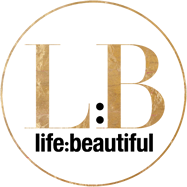
Departments
Make

Crowning Accents
Reclaim intricate moldings salvaged from old homes and buildings to create a textural mirror or art frame.
Look for a variety of trims at local antique or architectural salvage stores, or use new molding purchased from a home improvement store or lumberyard.
Materials
23×23×1-inch particleboard
12×12-inch mirror
Four ¾×1½×23¾-inch trim boards
Two ¾×1½×12-inch trim boards
Two ¾×1½×13½-inch trim boards
White satin paint
Dowels & trim pieces in various styles and sizes from ½ inch to 2 inches wide
Tools
Level
Measuring tape
Pencil
Joint compound
Paintbrush
Nail gun
Miter box with saw
Sandpaper
Instructions
Center mirror on particleboard using level and measuring tape. Mark corners with pencil. Apply joint compound to the back of the mirror. Set mirror in marked position and apply slight pressure. Let dry.
Paint precut trim boards with white paint. Let dry. Arrange the 23¾-inch pieces around the perimeter of the particleboard with the ¾-inch sides facing outward, keeping the edges of the material flush with each other. Use a nail gun to a secure the tops of the trim boards to the outside edges of the particleboard. Place the 12-inch trim boards on the side edges of the mirror, making sure mirror and trim are flush at the corners. Secure with nail gun. Add 13½-inch pieces to remaining edges of the mirror, aligning corners. Secure with nail gun.
Cut a mix of dowels and trim pieces to 23 inches and 9½ inches long using a miter box and saw (number needed will be determined by the widths of your pieces). Paint pieces white; let dry. Arrange pieces as desired inside the frame. Use nail gun to secure the pieces to the particleboard. Board should be completely covered.
For a more finished look, fill nail holes with joint compound and touch up with white paint. Let dry.
We want to keep in touch.
Don’t miss out on the latest Life:Beautiful updates, promotions and news.








